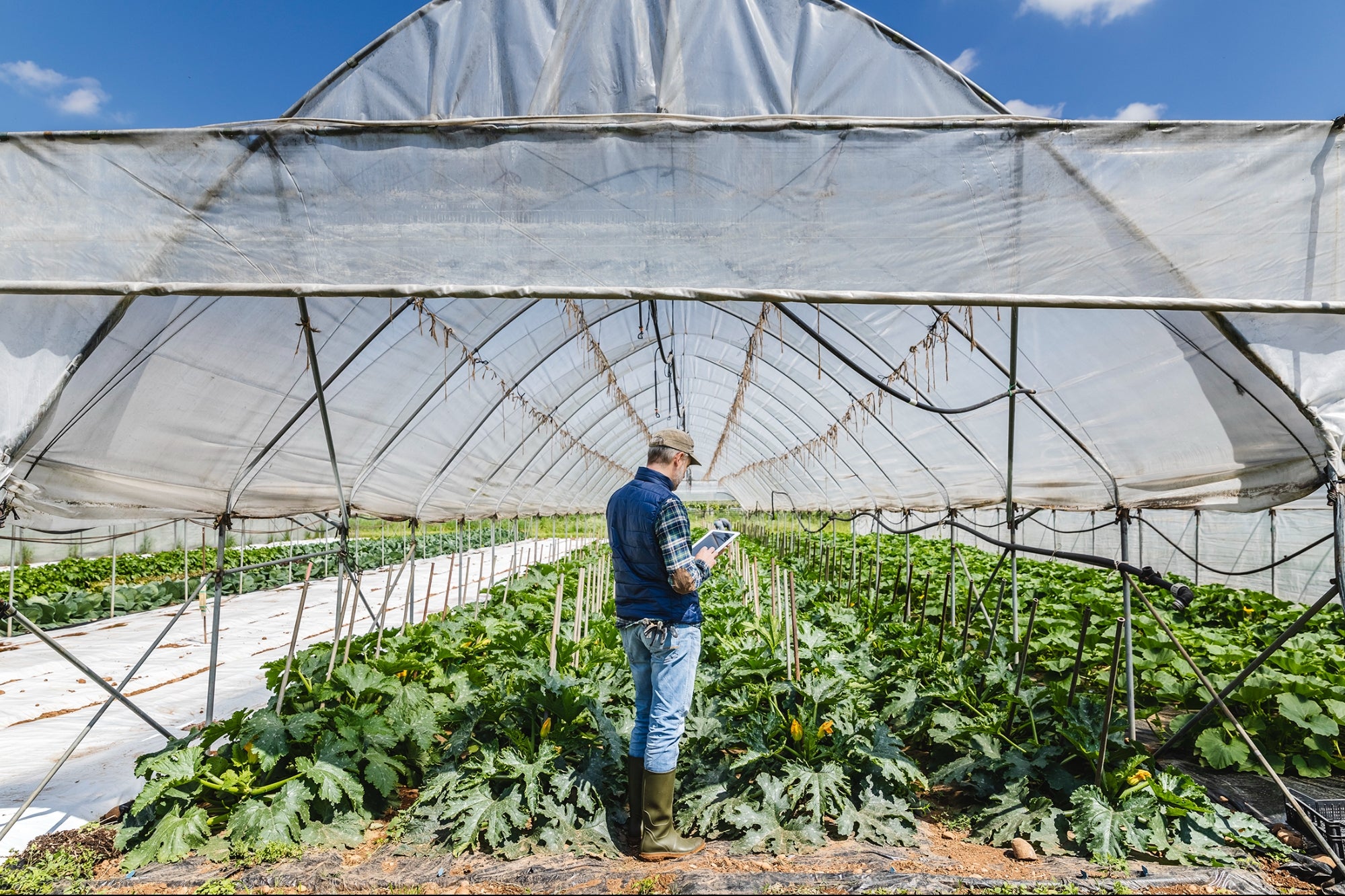We Have More Farming Data Than Ever, But This Crucial Piece Is Missing Farmers have been left to navigate an increasingly complex tech stack on their own. What's desperately needed is a single, integrated, intuitive interface.
By Michael Gilbert Edited by Chelsea Brown
Opinions expressed by Entrepreneur contributors are their own.

Soil sensors. Pest management platforms. Irrigation monitors. Satellite imagery. Labor management. Yield forecasting tools. File sharing. And even social media management. As agtech has proliferated over the last decade, the tech stack on the modern farm has grown dizzying. For farmers tasked with growing crops and managing all this IT, that presents a mounting challenge.
These tools, by and large, don't talk to one another. Platforms aren't compatible, and information sits in silos. Indeed, one study found 86% of agtech platforms are failing to share and analyze the data obtained effectively.
Missing from all this technology is the ingredient that lets our phones function seamlessly. The same tool that turned computers from esoteric machines into devices anyone could use with a few clicks. In other words, agriculture desperately needs an operating system.
Industry analysts stopped trying to tally agtech tools for years, but suffice it to say the modern farmer has thousands of technologies at their disposal. And, increasingly, these technologies are table stakes rather than bells and whistles.
Weather extremes are making farming less predictable and ever riskier. Input prices have skyrocketed with supply chain gaps and inflation. More than ever, growers must find efficiencies to stretch their resources and conserve time while meeting pressure from regulatory bodies and food retailers to justify their actions.
This is the promise of so much agtech today: to do more with less. But with so much on their plates, farmers need technology to be streamlined, user-friendly and integrated — and an operating system for the farm can help.
Related: What Matters Most While Opting for Smart Farming Technology
So what is an operating system (OS)?
In technical terms, an operating system is the software that "schedules tasks, allocates storage, and presents a default interface to the user." Familiar examples include Microsoft Windows, Google Android and Apple's iOS — without these technologies running in the background, other applications wouldn't function.
But what we need for agriculture is more conceptual. We're missing a central hub — a place where data is pooled and where digital tools are coordinated. This is what iOS does for iPhone users, after all. There are 3.6 million different apps that Apple users can use seamlessly on their phone, and it wouldn't be possible without the iPhone's operating system. iOS is the key intermediary between the user and the hardware, providing a common framework for communication and data sharing.
Consider the iPhone Health app: It can collect data from whichever apps a user chooses in order to track things like sleep quality, heart rate and the amount of miles walked in a day. It integrates that information and provides a streamlined interface, surfacing powerful new insights.
That kind of data sharing, usability and compatibility between software and hardware is thanks to the operating system — and it's the kind of integration agtech desperately needs.
Related: Why Revolutionizing Farming Should Be the Next Space Race
What booting up a farm OS can look like
Right now, farmers are spoiled for choice with a variety of apps and devices. But to get these tools working at their full potential, there needs to be a foundation in place.
For users, an ideal farm OS would be a one-stop shop to gather and display the farm's vital signs — from temperature to moisture levels and pest populations, and even labor and equipment availability. Equally important, an OS would help farmers triage decision-making, providing data-backed insights on what actions to take and when to take them.
Finally, a farm OS would offer a unified interface for farmers to deploy their technologies, from remote-activated irrigation and pest control to autonomous tractors.
Under the hood, what makes this system so effective is the collection and sharing of data. A common OS on the farm would also enable more connectivity between data sources like labor, equipment and yield, and it would also accelerate the development of new applications.
In farming, data is power. But while there's a ton of data being collected on farms every day, it's often siloed within a particular app and isn't integrated with other programs collecting complementary information.
A grower may capture data from their fields with a drone, for example, but there may be no bridge to translate the visual data into actionable advice for applications. It's up to the farmer to do the analysis, draw insights and find solutions — adding work to their plate. An operating system for the farm would allow these technologies to work in tandem and communicate their data to give farmers the answers they need.
Related: Key Agritech Trends To Expect In 2022
So, how do we get there?
If the case for a centralized farm OS seems clear cut, the realities of building one are more complex.
For starters, we are beginning to see proprietary end-to-end crop and farm management platforms that strive to bring diverse farming technologies into one hub. The problem is exactly that, however: These platforms are proprietary. Often, they integrate only a narrow range of tech and tools. Deeper still, some proprietary platforms drive the sales of chemical inputs, rather than prioritizing farmers' best interests.
A better approach is a farm OS purpose-built by an independent agtech company. The ideal platform is compatible with a full range of tools. It should provide cutting-edge analysis but offer farmers a neutral and unbiased space. Finally, a true farm OS needs to be robust enough to accommodate new technologies but simple enough for anyone to use.
Admittedly, this is easier said than done. But when done right, these systems become so invaluable as to be almost unnoticed.
What's clear is this kind of approach has the potential to transform farming. In a time of so much uncertainty for farmers, an integrated operating system puts growers back in the driver's seat and allows them to have better visibility and control of their outcomes.
A robust OS would usher in a new chapter for agriculture, bringing with it improved profitability for the farmer and sustainability for the environment. It's time we build a foundation for agtech that puts the power back where it belongs — in the hands of the stewards of the land. That starts with a farm OS.










